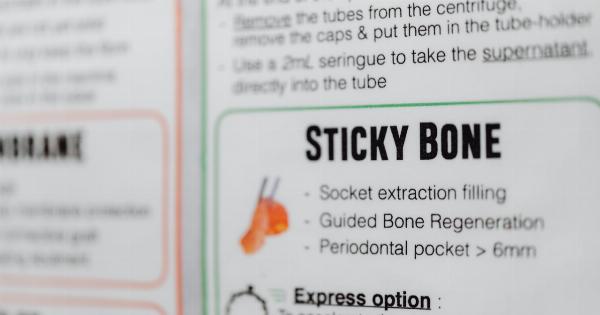Orgasmic dysfunction, also known as anorgasmia, is a condition where individuals have difficulty reaching orgasm or experience a significantly delayed orgasm.
This sexual disorder can affect both men and women, leading to frustration, dissatisfaction, and relationship issues. However, there are several strategies and approaches that can help manage and overcome orgasmic dysfunction.
In this article, we will delve into expert guidelines provided by Thanos Ascetic, a renowned sex therapist, to effectively address orgasmic dysfunction.
Understanding Orgasmic Dysfunction
Before diving into the specific guidelines, it’s vital to understand the causes and types of orgasmic dysfunction. This condition can originate from physical, psychological, or relational factors.
Physical causes may include hormonal imbalances, medical conditions like diabetes or multiple sclerosis, medications, or surgeries. Psychological causes can encompass stress, anxiety, depression, past trauma, negative body image, or relationship conflict.
Orgasmic dysfunction can present itself in various forms:.
1. Primary Orgasmic Dysfunction
In this type, individuals have never experienced an orgasm, even under favorable circumstances. It often suggests an underlying psychological cause and can be linked to issues like sexual inhibition or past traumatic experiences.
2. Secondary Orgasmic Dysfunction
Secondary orgasmic dysfunction refers to the inability to reach orgasm despite having previously experienced it regularly. Physical conditions, relationship problems, or psychological factors may contribute to this type of dysfunction.
3. Generalized Orgasmic Dysfunction
If an individual experiences orgasmic difficulties in all situations and with different partners, it is termed generalized orgasmic dysfunction. It typically involves psychological factors such as anxiety or depression.
4. Situational Orgasmic Dysfunction
Situational orgasmic dysfunction occurs when individuals can climax in certain circumstances or with specific partners but struggle in others.
This type is typically tied to psychological or relational factors, like performance anxiety or issues within the relationship.
Expert Guidelines to Address Orgasmic Dysfunction
1. Seek Professional Help
If you’re experiencing persistent orgasmic dysfunction, it’s crucial to consult a sex therapist, psychologist, or healthcare professional.
They can help identify the underlying causes, develop personalized treatment plans, and guide you through the process of overcoming the issue.
2. Explore and Communicate
Open communication with your partner about the challenges you’re facing is vital. Discussing your desires, concerns, and fears can help alleviate anxiety and create a safe space for exploration and experimentation.
Exploring different sexual stimuli, fantasies, and techniques can enhance pleasure and increase the likelihood of reaching orgasm.
3. Manage Stress and Anxiety
Excessive stress and anxiety can significantly impact sexual performance and pleasure.
Engaging in stress-reducing activities such as yoga, meditation, mindfulness, or regular exercise can help manage anxiety levels and improve overall sexual well-being.
4. Consider Sex Therapy
Sex therapy is an effective approach to address orgasmic dysfunction. A therapist can employ various techniques and exercises tailored to your specific needs.
These may include sensate focus exercises, cognitive-behavioral therapy, mindfulness techniques, or guided imagery exercises to enhance sexual pleasure and reduce psychological barriers to orgasm.
5. Experiment with Different Techniques
Exploring different sexual techniques and experimenting with new sensations can be beneficial in managing orgasmic dysfunction. For example, incorporating vibrators or other sex toys can enhance pleasure and improve the chances of achieving orgasm.
It is essential to find what works best for you and communicate your preferences with your partner.
6. Address Relationship Issues
Relationship conflicts can significantly impact sexual satisfaction. It is crucial to address any underlying issues with your partner, seek couples therapy if necessary, and work towards building trust and intimacy.
Resolving conflicts and fostering a supportive and loving environment can positively impact sexual well-being.
7. Explore Pelvic Floor Exercises
Strengthening the pelvic floor muscles can be helpful in managing orgasmic dysfunction.
Kegel exercises, which involve contracting and relaxing the pelvic muscles, can enhance blood flow, improve muscle tone, and potentially lead to more intense orgasms.
8. Consider Medical Evaluation
If you suspect that physical factors may be contributing to your orgasmic dysfunction, it is important to seek medical evaluation. Hormonal imbalances, medication side effects, or underlying medical conditions can negatively impact sexual functioning.
Identifying and addressing these factors can lead to improvements in orgasmic response.
9. Practice Self-Care and Self-Exploration
Engaging in self-care activities, such as taking the time to relax, pamper oneself, or explore one’s own body, can play a crucial role in managing orgasmic dysfunction.
Understanding your body, needs, and desires can empower you to communicate effectively with your partner and enhance your sexual experiences.
10. Maintain a Positive Mindset
Lastly, maintaining a positive mindset is essential in overcoming orgasmic dysfunction. It’s important to remember that this condition is treatable, and with patience, effort, and the right support, improvements can be achieved.
Surround yourself with positivity, seek encouragement, and believe in your ability to overcome this challenge.



























